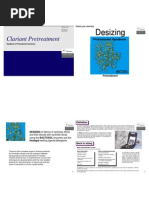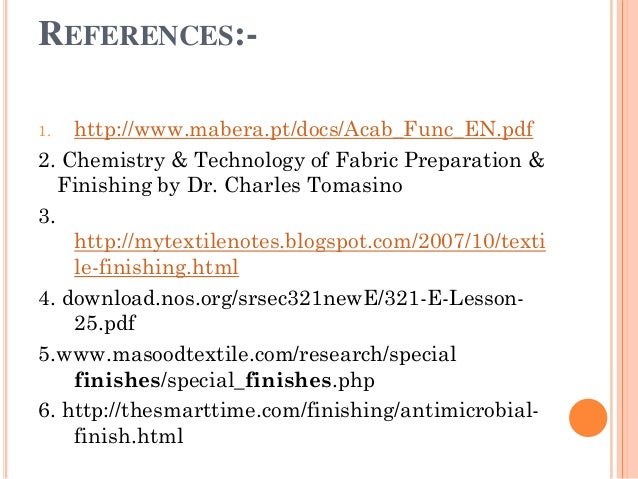Chemical Finishing Of Textiles Pdf Free Download
The role of the textile finisher has become increasingly demanding, and now requires a careful balance between the compatibility of different finishing products and treatments and the application processes used to provide textiles with desirable properties. In one comprehensive book, Chemical finishing of textiles details the fundamentals of final chemical finishing, covering the range of effects that result from the interplay between chemical structures and finishing products.After an introductory chapter covering the importance of chemical finishing, the following chapters focus on particular finishing techniques, from softening, easy-care and permanent press, non-slip and soil-release, to flame-retardant, antistatic and antimicrobial. Within each chapter, sections include an introduction, mechanisms, chemistries, applications, evaluations and troubleshooting. The book concludes with a chapter on the future trends in chemical finishing.Chemical finishing of textiles is an essential reference for all academic and industrial textile chemists and for those studying textile education programmes. Discusses the advantages and disadvantages of every important type of chemical finish. Combines technical understanding and practical experience concisely.
Essential tool to assist in the demanding challenge of chemical finishing for textilesDr W. Schindler is Professor of Textile Chemistry and Textile Finishing at the University of Applied Sciences Hof, Germany.
His main research interests are the chemistry of fibres, dyestuffs, textile auxiliaries, chemical finishing and textile chemical analysis. He published 39 papers and claimed several patents on new textile developments. 1 - Front Cover Seite 12 - Chemical Finishing of Textiles Seite 23 - Copyright Page Seite 34 - Table of Contents Seite 45 - Preface Seite 106 - Chapter 1. Introduction to chemical finishing Seite 126.1 - 1.1 Wet and dry or chemical and mechanical finishing Seite 126.2 - 1.2 The challenge and charm of chemical finishing Seite 136.3 - 1.3 Importance of chemical finishing Seite 156.4 - References Seite 177 - Chapter 2.

Chemical finishing processes Seite 187.1 - 2.1 Introduction Seite 187.2 - 2.2 Application of chemical finishes Seite 197.3 - 2.3 Drying wet textiles Seite 317.4 - 2.4 Curing chemical finishes Seite 327.5 - 2.5 Coating and laminating Seite 347.6 - References Seite 377.7 - Appendix: sample calculations Seite 388 - Chapter 3. Softening finishes Seite 408.1 - 3.1 Introduction Seite 408.2 - 3.2 Mechanisms of the softening effect Seite 408.3 - 3.3 Typical softened textiles articles Seite 428.4 - 3.4 Product types and their chemistry Seite 428.5 - 3.5 Schematic comparison of important properties of softeners Seite 478.6 - 3.6 Compatibility and combinability Seite 478.7 - 3.7 Evaluation and testing methods Seite 498.8 - 3.8 Particulars of and troubleshooting for softening finishes Seite 508.9 - References Seite 529 - Chaptet 4. Hand building finishes Seite 549.1 - 4.1 Introduction Seite 549.2 - 4.2 Definitions and terms Seite 549.3 - 4.3 The hand building effect Seite 559.4 - 4.4 Examples of textiles with hand building finishes Seite 559.5 - 4.5 Typical hand builder chemistry Seite 559.6 - 4.6 Evaluation methods Seite 599.7 - 4.7 Troubleshooting for hand building finishes Seite 619.8 - References Seite 6110 - Chapter 5. Easy-care and durable press finishes of cellulosics Seite 6210.1 - 5.1 Introduction Seite 6210.2 - 5.2 Mechanisms of easy-care and durable press finishing Seite 6310.3 - 5.3 Examples of textiles with easy-care and durable press finishes Seite 6510.4 - 5.4 Chemistry of easy-care and durable press finishes Seite 6610.5 - 5.5 Application methods Seite 7510.6 - 5.6 Compatibility with other finishes Seite 7810.7 - 5.7 Evaluation methods Seite 7810.8 - 5.8 Troubleshooting and practical problems Seite 8010.9 - References Seite 8311 - Chapter 6. Repellent finishes Seite 8511.1 - 6.1 Introduction Seite 8511.2 - 6.2 Mechanisms of repellency Seite 8611.3 - 6.3 Repellent chemistry Seite 8711.4 - 6.4 Evaluation of textiles treated with repellent finishes Seite 9511.5 - 6.5 Troubleshooting for repellent finishes and particularities Seite 9511.6 - References Seite 9612 - Chapter 7. Soil-release finishes Seite 9812.1 - 7.1 Introduction Seite 9812.2 - 7.2 Mechanisms of soil release Seite 9812.3 - 7.3 Soil-release chemistry Seite 10212.4 - 7.4 Evaluation of soil release Seite 10612.5 - 7.5 Troubleshooting for soil-release finishes Seite 10712.6 - References Seite 10813 - Chapter 8.
1 Introduction to chemical finishing1.1 Wet and dry or chemical and mechanical finishingTextile wet processing can be thought of having three stages, pretreatment (or preparation), coloration (dyeing or printing) and finishing. Finishing in the narrow sense is the final step in the fabric manufacturing process, the last chance to provide the properties that customers will value. Finishing completes the fabric's performance and gives it special functional properties including the final 'touch'.But the term finishing is also used in its broad sense: 'Any operation for improving the appearance or usefulness of a fabric after it leaves the loom or knitting machine can be considered a finishing step'. This broad definition includes pretreatments such as washing, bleaching and coloration. In this book the term finishing is used in the narrow definition to include all those processes that usually follow coloration and that add useful qualities to the fabric, ranging from interesting appearance and fashion aspects to high performance properties for industrial needs. This definition may be applied to similar finishing processes for grey fabrics (without coloration). Bleaching and carbonisation are chemical treatments that also improve the quality of fabrics.

Textile Chemicals List
They are not treated in this book because they belong typically in pretreatment, although there are rare exceptions.Most finishes are applied to fabrics such as wovens, knitwear or nonwovens. But there are also other finishing processes, such as yarn finishing, for example sewing yarn with silicones and garment finishing (see ). Textile finishing can be subdivided into two distinctly different areas, chemical finishing and mechanical finishing. Chemical finishing or 'wet finishing' involves the addition of chemicals to textiles to achieve a desired result (see ). Physical properties such as dimensional stability and chemical properties such as flame retardancy can both be improved with chemical finishing. Typically, the appearance of the textile is unchanged after chemical finishing.
Mechanical finishing or 'dry finishing' uses mainly physical (especially mechanical) means to change fabric properties and usually alters the fabric appearance as well. Mechanical finishing also encompasses thermal processes such as heat setting (thermal finishing).

Typical mechanical finishes include calendering, emerising, compressive shrinkage, raising, brushing and shearing or cropping, and especially for wool fabrics milling, pressing and setting with crabbing and decatering. A summary of mechanical finishing has recently appeared.Often mechanical and chemical finishing overlap. Some mechanical finishes need chemicals, for example milling agents for the fulling process or reductive and fixation agents for the decatering of wool fabrics. On the other hand chemical finishing is impossible without mechanical assistance, such as fabric transport and product application. The assignment to mechanical or chemical finishing depends on the circumstance, if the major component of the fabric's improvement step is more mechanical- or chemical-based.This book will focus on the chemical finishing of textiles, the application of relatively minor amounts of chemicals (often.





